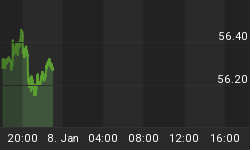Let us all grab the reins on the dollar. Yes, it is true: the buck is up some 25% from a year ago, and at the highest level in more than a decade. After retracing recently, the dollar index has been chugging higher again although it has yet to penetrate recent highs. But put this all into context. In the early 1980s, the dollar index exceeded 160 before dropping nearly by half. A subsequent rally into the early 2000s was a 50% rally from the lows and took the index to 120. This latest rally is a clear third place, but also a distant third place (see chart, source Bloomberg).

We can probably draw some instruction from reviewing these past circumstances. The rally of the early 1980s was launched by the aggressively hawkish monetary policy of Paul Volcker, who vowed to rein in inflation by restraining money growth. He succeeded, and took core inflation from nearly 14% in 1980 (with the dollar index at 85) down to 4.5% in 1985 (with the dollar index at 160). If you make a thing, in this case dollars, more scarce, its price rises. An optimistic press wrote about the "Superdollar" and the return of that signature American optimism.
Well, one out of two isn't bad. The dollar soon slipped back, as other central banks instituted similar monetary restraint and the relative advantage to the greenback faded. It bounced around until the late 1990s, when Congress attacked the federal deficit - actually turning it into a surplus in the late 1990s. The dollar rallied fairly steadily from 1995 until topping out between late 2000 and early 2002, thanks to aggressive easing action from the Fed which took the Fed Funds target rate from 6.5% to 1.0%.
But it is important to remember that with currencies, it is all relative. If everyone is easing or everyone is tightening, then there shouldn't be much in the way of relative currency movements. Thus, even though the Fed has spent most of the last seven years doing quantitative easing, the dollar hasn't done much on net because everyone else is doing so as well. All currencies should be cheapening relative to real assets (and are, with respect to real estate, but not so much with commodities...for reasons that make little sense to me), but not relative to one another.
But recently, the dollar has outperformed because the investing community collectively perceived a divergence in monetary policies in the offing. While Japan and Europe have been ramping their QE higher, the Fed has ended its QE and at least some people expect them to raise rates soon. If it were to actually happen that money growth in Japan and Europe continued to accelerate while it slowed in the U.S., then it makes perfect sense that the dollar should appreciate. That is happening a little: the chart below (source: Bloomberg) shows that in the most recent data, European M2 money growth exceeded US M2 money growth (as well as UK and Japan M2 money growth) for the first time since 2008. Look at that spike on the red line in the chart below!

On the other hand, there doesn't seem to be anything dramatic happening on that chart, with all growth rates between 3.5% and 6.1%. And, honestly, I think investors have it generally wrong in thinking that if the Fed hikes US interest rates, money growth should slow and overall monetary conditions should tighten. Quite the contrary: I believe that with enormous excess reserves in place, rising interest rates will only spur bank interest in lending, and money growth will not slow but may even increase. But in any event, dollars are not about to become more scarce. The Fed doesn't need to do any more QE; the vast quantities of excess reserves act as a reservoir of future money.
I have been surprised by the dollar's rally, but unless something changes in a more serious way I don't expect the rally to end up resembling the two prior periods of extended dollar strength.
You can follow me @inflation_guy!
Enduring Investments is a registered investment adviser that specializes in solving inflation-related problems. Fill out the contact form at http://www.EnduringInvestments.com/contact and we will send you our latest Quarterly Inflation Outlook. And if you make sure to put your physical mailing address in the "comment" section of the contact form, we will also send you a copy of Michael Ashton's book "Maestro, My Ass!"
















